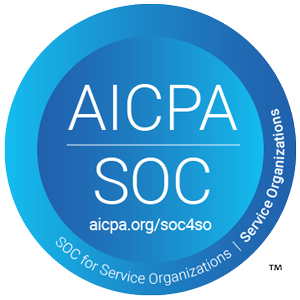Innovation is no longer a sideline effort or something companies can hope to luck into – if it ever was. As we enter 2016 we approach an innovation crossroads, where companies have two choices:
- Change their thinking and thrive
- Refuse to adapt and fade into obscurity
Here’s where we see innovation heading in 2016 – with comments from our Customer experts this past year – and what enterprises must do to remain relevant going forward.
Key stakeholders will align
“There’s no executive on the planet who hasn’t acknowledged that innovation is essential to their longevity,” said Courtney Wood, Director of Innovation Management Services at TCS, in our September hangout.
Yet one of the biggest challenges of corporate innovation has been selling C-suite executives on the importance of innovation as a process – and as an enterprise-wide culture. We predict 2016 will be the year the C-suite embraces the importance of innovation as a process, leading from the top down. And it’s not a moment too soon.
Says Wood, “An aligned culture is going to be your number one driver of success, and absence of it is your number one driver of failure.”
This was something HP was having trouble with – along with silo thinking contributing to an overall lack of participation. But once their Executive Vice President and leadership team began promoting the company’s innovation program they saw huge results: Roughly 15 ideas moved to incubation stage consistently every quarter, with 3 or more moving to the funding stage or implementation. And they developed revenue-generating products.
But there’s another reason to get your culture aligned from the top-down sooner rather than later. “Some companies aren’t going to be here in 10 years,” says Kuhan Milroy, Senior Director of Social Business Innovation for SAP Community Network, putting things into more sobering terms. No one wants to be on that list.
Innovation platforms will streamline efforts
From updating e-commerce tactics to product development aimed at the Internet of Things (IoT) and virtual reality, innovation is top of mind in all industries. Successful implementation of innovation efforts in today’s fast-paced timeframe means embracing technology as a tool, not just an outcome.
“Data is becoming more important,” Peter Burris reminded us in November, “especially in the form of software, to how we think about innovation. And that brings disruption and innovation within reach of so many more people. Every business has to come up with a strategy for thinking of how they’re going to innovate – not in 2020, but right now.”
“Living in a tech era, we need to leverage tech as much as possible to make life simpler,” adds Stephanie Hegarty, Innovation Program Manager at Cisco. “So we can think about that next big initiative we’re trying to solve.”
This was something Hegarty put into action in her previous role as IPM at Nielsen. The company had an organically growing innovation program – but without an automated system in place, scaling was next to impossible, and their efforts kept stalling.
Nielsen implemented Brightidea and was able to streamline all areas of innovation management – from vetting and prioritizing ideas (more than 500 detailed and results-focused submissions per quarter), to offering immediate metrics to senior management when asked.
So not only can you keep pace with competitors by using software to manage your innovation process, you can track your own efforts and results and adjust as needed to keep ROI on point.
This has additional future implications, specifically connecting industries via the Innovation Grid we envision, where innovation will happen globally across companies, in a more openly collaborative way. But in the short term, innovation software allows enterprises to more easily include customers in the mix – something else we predict will be a major trend in 2016.
The “Age of the Customer”
Ideas are the “most fundamental social human capital,” according to our Brightidea CEO, Matt Greeley. And innovative ideas can come from literally anyone – including your customers. This is something that enterprises will need to recognize and allow for in the coming year.
“We’re not innovating inside our four walls in the same way that we used to,” Burris notes. “In what we call the Age of the Customer, out close to the action is where a lot of good ideas are going to happen.”
That means it’s important to understand how you engage customers to bring in the information they supply. Also key is design thinking approach and having a streamlined system for ideation and follow-through to keep participants in the loop – whether they are on staff, or customers of the enterprise.
Once you know how to engage participants inside the company – like Cabot did, extending beyond small groups to include 4600 workers globally – you can apply the same process to customers, vendors, anyone you want.
And that’s good. Because whether you’re hosting periodic hackathons, or constantly accepting ideas for vetting, in 2016 your customers will become an even more valuable resource to your process.
You haven’t missed the party – yet
Though a new calendar year is always a good time to stop and assess where you are as a company, Courtney Wood makes a good point: “Organizations have been innovating since the beginning of time—just the pace has changed.”
And as Nick Selk, Innovation Program Manager of Cisco says, “If you’re not leveraging a dedicated idea crowdsourcing tool you’ve left a gaping hole in your innovation strategy.”
The idea of innovating shouldn’t have you running scared, even if it is just becoming a growing priority. An innovation management tool and working with the right vendor can help you on a path to success. 2016 is the time to make the change to set yourself and your company up for the future – one where you’re successful for decades to come.
I welcome hearing your predictions. Please comment.
Ready to take your place as an innovation front-runner? We’re ready to help!



“Organizations have been innovating since the beginning of time—just the pace has changed.” This does ring true to many organizations but how can a small business use the “lessons learned” from larger companies to help build a solid foundation for a profitable ROI?
Thanks for asking. Smaller companies can apply lessons learned from large companies by looking at the maturity of their innovation program and comparing. It is important to understand the journey the innovation program took and what they considered (their checklist). You can then adapt this to your smaller company needs by considering what applies (ie you need an Executive sponsor, you need excellent relevant challenge topics, you need to do challenges to make your innovation program successful, you need to communicate to get participants and keep participant #’s growing, etc.)